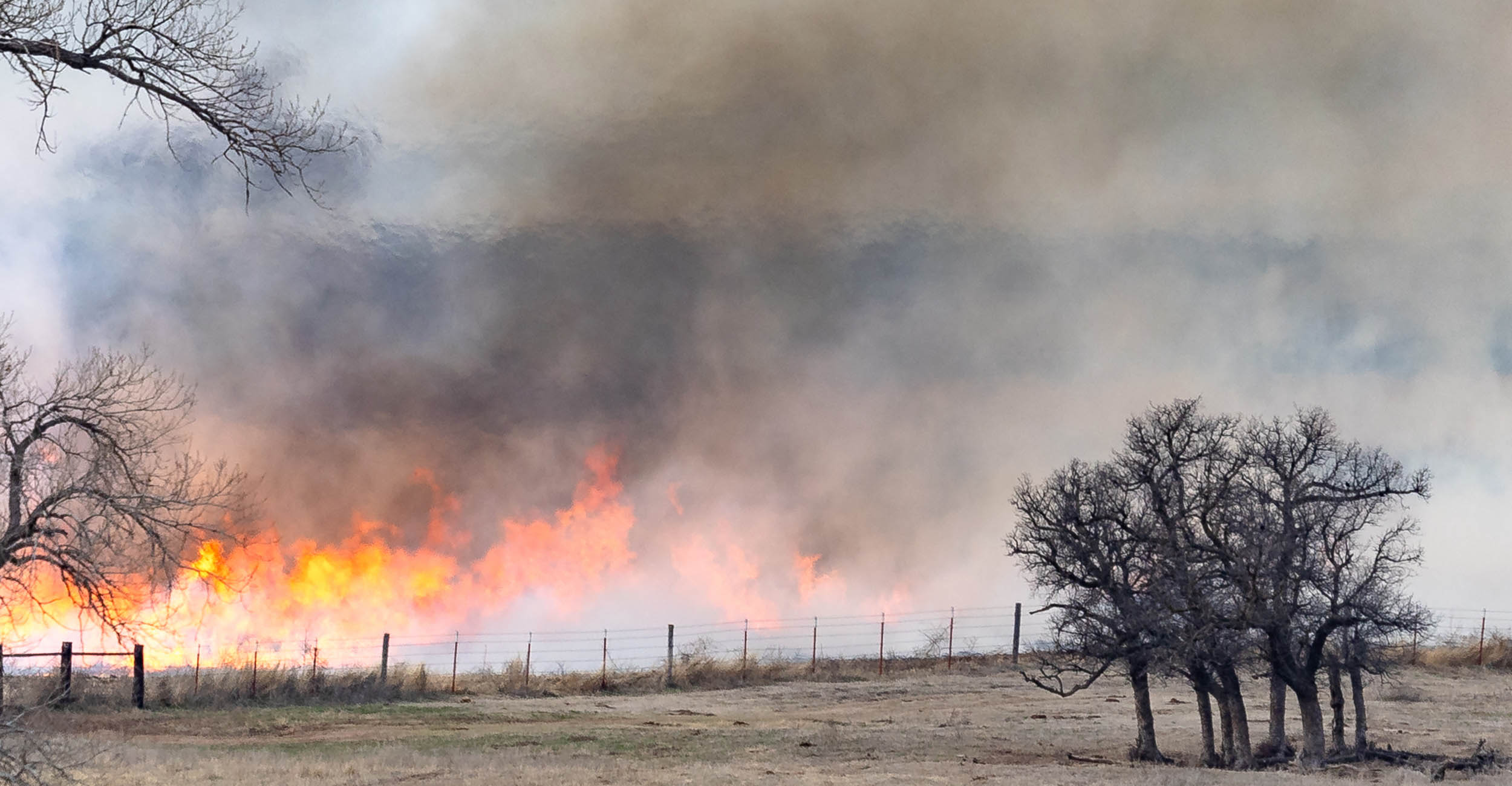
Spring wildfire prevention and protection
Tuesday, March 26, 2024
Media Contact: Gail Ellis | Editorial Communications Coordinator | 405-744-9152 | gail.ellis@okstate.edu
Oklahoma’s wildfire season runs from November through March when plant life and vegetation are dormant.
What to know
Dry air, low humidity levels and strong winds are the ideal conditions for outbreaks that can occur any time of year but are historically prevalent in March, the windiest month of the year. Oklahoma’s wide, open spaces, particularly in the western part of the state, are what allow small fires to spread and grow quickly.
Protecting land and property
Communities are encouraged to participate in the National Firewise USA program, which educates residents on how to protect homes and neighborhoods in areas at high risk of wildfire. Landowners living in remote, rural areas should take the following precautions during wildfire season:
- Survey the status of the home, other buildings and equipment. Determine how the property can stand alone if fire response is delayed or not available.
- Keep the area mowed down short and make sure any kind of flammable shrubs or trees are a safe distance from the home and buildings.
- Prune tree limbs to prevent fire from spreading to the crown of trees.
- Clean up other flammable items around the home and buildings, including firewood. Stack or store firewood a safe distance away from the home.
- Consider the fire entry points of a home. Keep windows and doors shut on barns to prevent the entry of flying embers.
- Identify bare ground or a gravel area where equipment can be stored in case of fire.
- Spread out hay supplies — don’t store all hay in one area.
- Develop a livestock contingency plan. Determine where animals can be moved to a trampled-down area or corral until the fire passes.
- Check with the insurance company for details on current wildfire coverage. Make sure the policy is up to date and determine if the plan needs to be modified.
Prescribed burning to prevent wildfires
Prescribed fires and other controlled burns are most common in early spring to help restore and conserve rangeland ecosystems. More than a million Oklahoma acres are treated with prescribed fire each year.
John Weir, Oklahoma State University Extension specialist in fire ecology, said controlled burns benefit the state in many ways.
“With widespread use of prescribed fire, volatile fuels like eastern red cedar become a non-issue for landowners and for firefighters trying to control wildfires,” he said.
Enroll in the OSU Extension prescribed fire online course, view the OSU Extension prescribed burning handbook and learn more about preparing for wildfire season.
